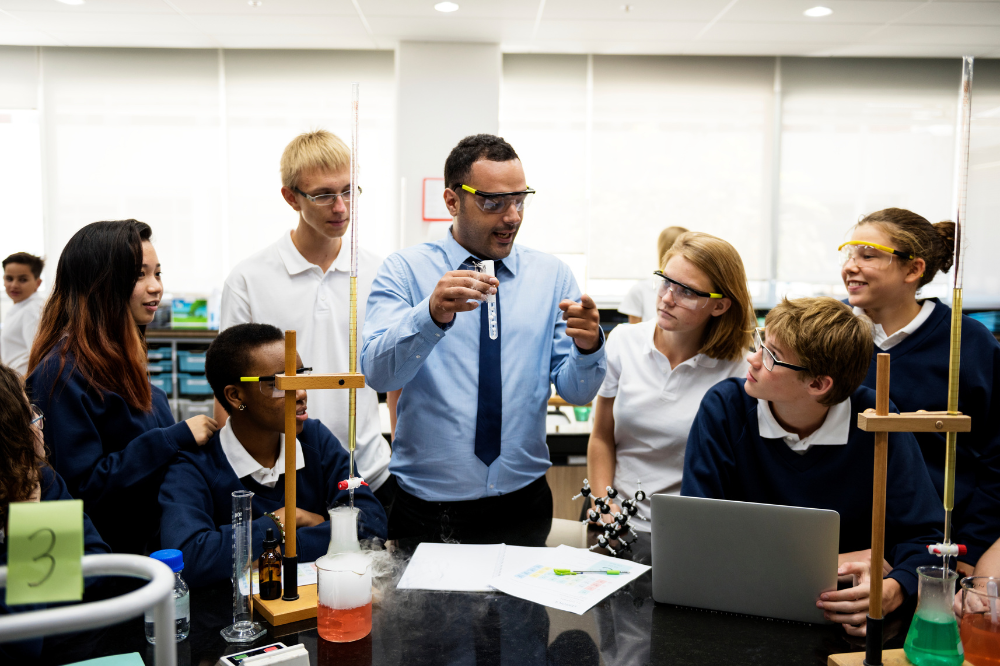
A major report shows many Australian teachers are teetering on burnout despite spending less than half of their working week actually teaching.
The Teaching and Learning International Survey (TALIS) 2024 study shows that while Australian teachers are working an average of 46.5 hours per week – well above the OECD average of 40.8 hours – less than half of their working week is actually spent teaching children. Yet, almost two-thirds report experiencing high stress, with more than 80% saying their job negatively impacts their mental health.
The report also confirms that Australia is now among the top three OECD countries for teacher shortages in public schools – a finding that Australian Education Union (AEU) Federal President Correna Haythorpe called “unacceptable for a wealthy, developed nation.”
“We urgently need national action to fix the teacher pipeline, from recruitment into initial teacher education to retaining experienced teachers in classrooms,” Haythorpe said in a statement.
The TALIS data also shows that shortages are most severe in schools with high levels of student disadvantage and special education needs, which are the very schools that rely most on stable, experienced teaching staff.
“When students with additional needs or from disadvantaged backgrounds are most affected, the result is a deepening equity divide in Australian education,” Haythorpe said.
Green shoots amid the pressure
Professor Theresa Dicke, from the Institute for Positive Psychology and Education at Australian Catholic University, said the latest TALIS survey “presents a familiar but complex picture of Australian schools.”
“Teachers report high workloads, administrative burden, and intensifying expectations. Yet the same data also show a profession characterised by strong professional identity, high job satisfaction, and sustained commitment to students and colleagues,” Professor Dicke told The Educator, adding that these findings sit alongside positive national trends.
“Applications for initial teacher education programs are up around 7 per cent, while offers are up 14 per cent nationally, and at ACU enrolments have grown sharply, including a 41 per cent rise at the Brisbane campus for Semester 1, 2025.”
Professor Dicke also noted that employment-based routes such as the All Points to Teaching (APTT) program, co-funded by ACU and the Commonwealth, and the government’s High Achieving Teachers initiative are also drawing new entrants from other sectors.
“Together these indicate modest recovery in supply and broader access to the profession.”
The tension, however, lies between supply and sustainability, Professor Dicke pointed out.
“TALIS confirms that workload volume and task complexity — rather than individual resilience — drive teacher strain,” she said. “This aligns with evidence from the 2024 ACU Principal Health and Wellbeing Survey, which identifies role overload and administrative demands as key stressors across leadership and teaching roles.”
In both datasets, supportive leadership, collegial trust, and opportunities for collaboration predict stronger wellbeing and retention, Professor Dicke said.
“These are systemic conditions, not personal traits.”
Graduates well prepared for core teaching
Australian evidence also challenges the notion of a “broken” ITE pipeline, Professor Dicke said
“Most graduates report feeling well prepared for core teaching tasks. The larger gap is in ongoing professional learning once teachers enter schools,” she said.
Referring to the Monash Australian Teachers Survey (2023), Professor Dicke said while many teachers value professional development, they question its relevance and accessibility.
“Sustained, practice-based mentoring and collegial learning opportunities remain central to early-career retention,” she said.
Professor Dicke said findings from the ACU’s own analysis of TALIS data further emphasise the central role of the school environment and motivational quality in sustaining job satisfaction among both teachers and principals.
“Across countries, satisfaction was consistently higher where schools were collegial, orderly, and participatory, and where leaders promoted trust and professional autonomy,” she said. “Conversely, environments dominated by compliance, top-down decision-making, or limited voice predicted lower satisfaction and higher strain.”
Professor Dicke said these patterns reinforce that wellbeing and motivation are shared organisational responsibilities rather than individual attributes.
Flourishing teachers need time and trust
Looking ahead, Professor Dicke said several priorities are clear to ensure that Australia’s teaching workforce is properly supported.
“Teachers’ time must be protected by reducing low-value administrative tasks and safeguarding collaboration and mentoring time,” she said. “Additionally, it is important to scale employment-based routes with quality, ensuring structured coaching and induction.”
Professor Dicke also pointed to the importance of strengthening professional learning that targets key classroom challenges such as behaviour and differentiation.
“Support must also be given to school leaders to build and sustain climates of care through coaching and workload relief,” she said.
“If current ‘green shoots’ in recruitment are matched by renewed attention to workload, mentoring, and school climate, Australia can move from short-term recovery to a more sustainable teaching workforce—one that allows educators not only to enter the profession, but to remain and flourish.”

